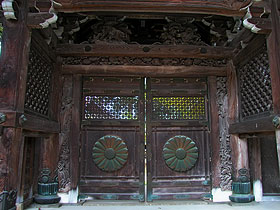SDF Capabilities and War Potential
by Corey Wallace on Aug 13, 2013 • 5:56 pm 2 Comments
Introduction
This is part one of a five-part series on pressing issues related to Japan’s security policy in 2013. The first issue that needs to be clarified given various media misunderstandings also provides essential background for the discussion of the subsequent three posts on helicopter “carriers,” amphibious capabilities, and preemptive strike capabilities.
War Potential: Constitutional Limits on What the SDF Can “Have”
While it may make for a good story to look at the constitution and Article 9 by trying to discern “first principles” from the original text itself, this in reality is not how constitutional interpretation works in Japan (and many other countries). Instead, a body of legal conventions, interpretations, and decisions has evolved since 1952, and has set precedents for the operationalization of the constitution. In Japan’s case it is the Cabinet Legislative Bureau (Naikaku Hôsei Kyoku) that has been the gatekeeper, and the main source of legal interpretations of the Japanese constitution, at least as it applies to national security/defense (see Richard Samuels here for the definitive discussion of the CLB in post-independence Japan).
The Japanese Supreme Court did in the Sunakawa case of 1959 hold that self-defense is not excluded by the Japanese constitution, and that Japan can legally enter into military alliances such as the US-Japan alliance, but by convention it has left interpretation of the national-security related provisions of the constitution, and the constitutional legitimation of national defense related laws, up to the CLB.
As national self-defense has been understood to be a legitimate function of the Japanese government and the sovereign right of the nation, what has by constitutional convention been proscribed is “war potential” (senryoku).[1] The potential to wage “war” as a means of “settling international disputes” has, on the basis of international treaties, been understood by the Japanese government to be the potential to engage in war to invade other countries.[2]
There are two relevant technical issues that need to be addressed here. First, the Japanese government interprets “war potential” as referring to the total strength of the SDF or any given capability, and not necessarily whether a given capability is mostly offensive, or mostly defensive.[3] Second, and critically, “war potential” is not an unchanging, absolute level of military capabilities. It is thus relative to international conditions, the geostrategic nature of threats facing Japan, and the level of defensive strength such threats can deploy against Japan, in terms of both quantity of hardware and quality of technological capabilities.
The implication of the above is that, what is considered to be “war potential” in one period of time and context, may not be “war potential” in another. For example, the SDF as it currently exists (assuming less technological sophistication) would probably very well have been “war potential” in the early 1960s, when China had no power projection capabilities to speak off, and the USSR was not yet a force in the Pacific Ocean. As a concrete example, the ability to refuel mid-air was apparently prohibited in the 1960s, but by the late 1980s this option began to be studied, and by 2001 it was, after some controversy, no longer considered to be war potential.[4] Contemporary justifications for acquiring the four KC-767J refuelling tankers included the need to refuel fighters and early-warning aircraft in flight and extend their ranges to allow them to “spot aircraft that escape ground-radar detection as well as help reduce fuel costs during military drills,” the need to prevent accidents, and the fact that they could be valuable for humanitarian missions through the ability to refuel Japan’s transportation craft.[5] Ultimately, however, it was the ability of USSR/Russia and the PRC to challenge Japan’s security within Japan’s wider defensive perimeter, and Chinese possession of these aircraft themselves, that was a crucial legitimating factor in comparison with the early 1960s.[6]
One may thus be wondering if any type of hardware actually, a priori, proscribed by the Japanese constitution.
One general category of capabilities has actually been interpreted as being proscribed by the constitution. This is the category of exclusively offensive capabilities that could be used to destroy other countries. In other words, it proscribes those capabilities that would have no particular value for defending Japan, and would only have use in assailing and systematically destroying the civilian and wider military infrastructure of another country.
Specifically, these capabilities would be the maintenance of CVN-like “supercarriers,” ICBMs, and long-range strategic bombers. In addition, other capabilities which in terms of quantity and quality, and relative to geostrategic balance of power, exceed the minimum that Japan requires for self-defense, are also proscribed. In theory, in the future, it is entirely possible that Japan’s current defense capabilities could become unconstitutional– if we see widespread regional and global disarmament.
To be sure, this interpretation of war potential is amorphous, not without its contradictions and grey-zones, and is, frankly, tautological. There is plenty of scope to disagree with the interpretations the government has offered, and the policy decisions they have made. But it is important to recognize that, by convention, this understanding of “war potential” has nevertheless been the main factor limiting Japan’s post-war military development. It is the basis upon which the implementation and operationalization of the defensive-orientated defense (senshu bouei) policy has proceeded since independence in 1952, and officially from 1957 after the promulgation of the Basic Policy for National Defense.
On the other hand, “pacifism” is not a particularly useful framework from which to view Japan’s post-independence security policy, and ultimately obscures more than it explains.[7] To be clear, it is certainly true that the current Japanese administration has no particular love for Japan’s post-war antimilitarist security approach, and would dearly like to “normalize” Japan’s security policy by changing the constitution. The key political and policy question until mid-2016 will be whether Abe and the LDP are successful in going beyond Japan’s somewhat domestically popular traditional approach to security, or, will ultimately have to settle for strengthening the SDF and Japan’s national security approach within the context of Japan’s current constitutional limitations. The above discussion of “war potential” in combination with the discussion of four security issues that have attracted international controversy and concern will help us make this judgement.
See the next instalment: Japan’s “Aircraft Carriers”?
http://jsw.newpacificinstitute.org/?p=10981















